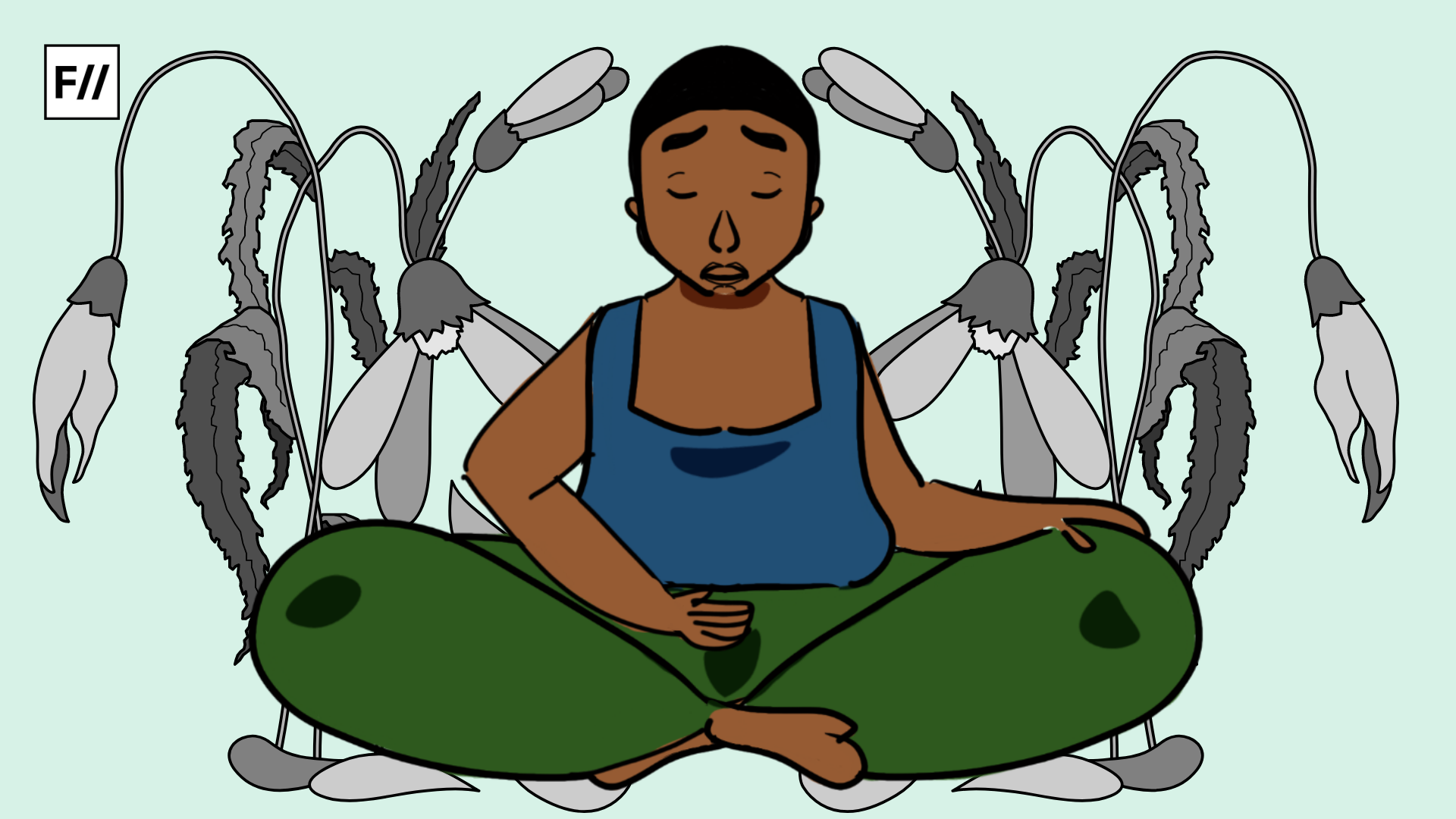Vaginitis is a vaginal inflammation or infection that can cause odorous vaginal discharge, itching, burning, and pain. It is a common condition that affects nearly all individuals bearing a vagina at some point in their lives. A change in the balance of vaginal bacteria, lack of estrogen, sexually transmitted infections or irritations from chemicals or sprays are the most common causes of vaginitis.
What are the most common types of vaginitis?
Vaginitis is a broad term that refers to a variety of vaginal conditions. There are many different types of vaginitis, but the most frequent ones are bacterial vaginosis, yeast infections, and trichomoniasis. Bacterial vaginosis (BV) is caused by an excess of bacteria present naturally in the vaginal area. Candida albicans, a naturally occurring fungus, causes yeast infections.
Trichomoniasis, on the other hand, is caused by a parasite and is commonly transferred through sexual contact. Besides these, chlamydia or gonorrhea, viral vaginitis (herpes), non-infectious vaginitis, atrophic vaginitis are other types of vaginitis.

What are the symptoms of vaginitis?
Change in color, odor or amount of discharge from vagina, vaginal itching or irritation, pain during sex, painful urination, light vaginal bleeding or spotting are the most common symptoms of vaginitis. The characteristics of one’s discharge can sometimes aid in determining the sort of vaginitis one is suffering from.
Bacterial vaginosis, for example, causes a grayish-white, foul-smelling discharge. Trichomoniasis is indicated by a greenish-yellow, sometimes foamy discharge. Though itching is the most common symptom of yeast infection, a thick white discharge that looks like cottage cheese can also be seen.
What are the risk factors for vaginitis?
Hormonal changes associated with pregnancy or menopause increase the risk of developing vaginitis. Antibiotics and steroids, as well as high-estrogen contraceptives, spermicides, and the use of an intrauterine device (IUD) for birth control, all contribute to the risk of contracting a vaginal infection.
Vaginitis is a condition that can affect women who have uncontrolled diabetes, thyroid or endocrine issues, or are on corticosteroid medication. The greatest risk factor, however, is having unprotected sexual intercourse, thereby increasing the probability of contracting a sexually transmitted vaginal infection.
Maintaining good personal cleanliness can help prevent some types of vaginitis, as well as make them less likely to recur. Cotton underwear, gentle soaps devoid of irritants or scents, loose-fitting clothing, wiping from front to back, and using a latex or polyurethane condom are all good ideas
Diagnosis and treatment
The key to effective vaginitis treatment is accurate diagnosis. This isn’t always easy because different types of vaginitis can have the same symptoms. You may help your doctor by keeping track of what symptoms you have and when they occur, as well as a description of the color, consistency, amount, and smell of any atypical discharge.
The sort of vaginitis you have will determine your treatment options.Low-potency topical steroids, oral antibiotics, antifungals, or antibacterial creams are commonly used to reduce symptoms . Butoconazole and clotrimazole are two medications used to treat fungal infections. Antibiotics such as metronidazole (Flagyl) or clindamycin are commonly used to treat bacterial vaginitis (BV).
If your vaginitis is caused by hormonal fluctuations, a topical estrogen cream can help you feel better. Antihistamines are prescribed when an allergic reaction causes inflammation. Make sure you finish all of your medication and don’t quit just because your symptoms have subsided. If a woman is pregnant, she should inform her doctor, because vaginitis might harm the fetus and some treatment choices may be ineffective.
Also read: What Is Vaginismus And What Can You Do About It?

Common queries about vaginitis
- Does vaginitis go away on its own?
Waiting for vaginitis to go away is not a smart idea. Some minor yeast infections resolve on their own, but this is not the situation in all cases. If you don’t treat your vaginitis, you’re more likely to get STIs.
- Can vaginitis cause other health problems?
Several types of vaginitis, including BV and trichomoniasis, can raise your chances of contracting HIV or another sexually transmitted disease. If you’re expecting a child, BV or trichomoniasis can put you at risk for preterm labor and delivery.
- Is vaginitis contagious?
Trichomoniasis, chlamydia, and herpes are all transmitted during intercourse. Although bacterial vaginosis is not contagious, having unprotected intercourse with several partners may increase your chances of contracting it.
- Is vaginitis an STD?
Vaginitis is not a sexually transmitted disease or a STI, however it can be caused by several sexually transmitted infections. Sexual contact is how trichomoniasis, chlamydia, gonorrhea, herpes, and HPV are spread. Nonetheless, sex isn’t the only cause of vaginitis. Bacterial vaginosis, yeast infections, non-infectious vaginitis, and atrophic vaginitis are examples of non-STI vaginitis.
The prejudice related to women’s sexuality, sexual functioning, and STIs contributes to the humiliation associated with vaginitis diagnosis. Women and queer individuals with vaginitis are frequently accused of being “unclean, immoral, and sexually promiscuous“. As a result, the majority of them keep quiet and suffer in silence for fear of being mocked or criticised. Societal stigma prevents patients from receiving effective care and puts their health at greater risk
How to prevent vaginitis?
Maintaining good personal cleanliness can help prevent some types of vaginitis, as well as make them less likely to recur. Cotton underwear, gentle soaps devoid of irritants or scents, loose-fitting clothing, wiping from front to back, and using a latex or polyurethane condom are all good ideas.
Douching, antibiotics, perfumed tampons, and pads should all be avoided. Infection is more likely when you use hot tubs, whirlpool spas, or wear clothing that traps heat and moisture. STI checks should also be done on a regular basis. Having a complete gynecologic exam is also recommended.

The toll it takes on people with vaginas
Vaginitis can have a significant physical, emotional, sexual, and societal impact on an individual. There is no denying that vaginitis is an unpleasant condition. The patient feels self-conscious, frustrated, and annoyed because of the itching, irritation, and burning feeling in the vulva and vagina, as well as pain in the lower abdomen and pelvic areas.
They also experience anxiety, low self-esteem, self-blame, and embarrassment as a result of their diagnosis. Vaginitis can also be lonely since it raises questions about future sexual interactions and relationships.
The prejudice related to women’s sexuality, sexual functioning, and STIs contributes to the humiliation associated with vaginitis diagnosis. Women and queer individuals with vaginitis are frequently accused of being “unclean, immoral, and sexually promiscuous“. As a result, the majority of them keep quiet and suffer in silence for fear of being mocked or criticised. Societal stigma prevents patients from receiving effective care and puts their health at greater risk. It is high time for us, as a society, to realise that stigmatising a medical condition is not only irrational, but also fatal.
Also read: “The Sex Which Is Not One”: Vaginismus And The Construction Of Female Sexuality
Featured Image: Ritika Banerjee for Feminism In India
About the author(s)
Shawrina is currently doing her honors in English Language and Literature at the East Delta University. She is just dipping her toes into the vast ocean of writing. She is always on the lookout for inspiration from the simple things in life. Her research interests involve anything that makes her wonder about the world around and within her




